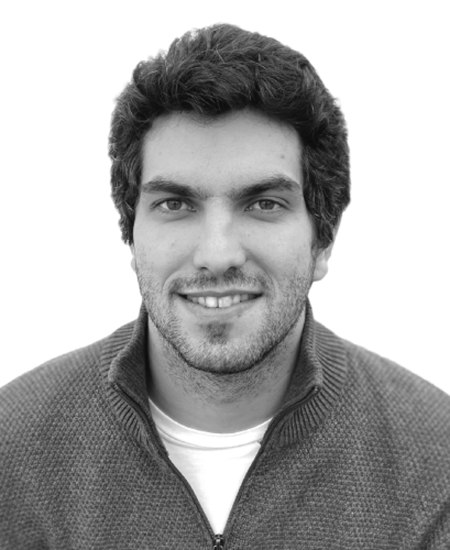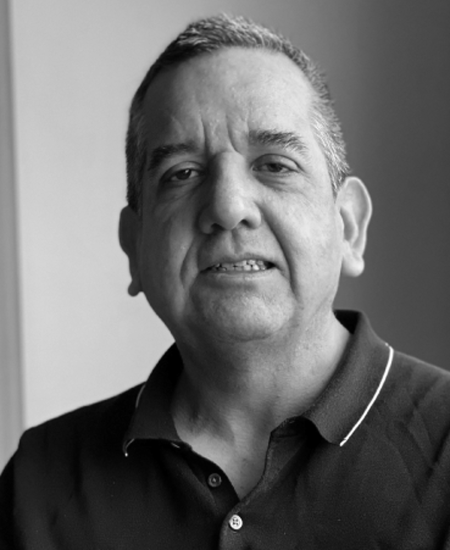Abstract:
This article presents Churinet, a hybrid neural network-based method, devoted to on-board spacecraft relative position and attitude estimation in the vicinity of minor bo...Show MoreMetadata
Abstract:
This article presents Churinet, a hybrid neural network-based method, devoted to on-board spacecraft relative position and attitude estimation in the vicinity of minor bodies such as asteroids, comets or small moons, using monocular vision. In the context of navigating such minor bodies, traditional heuristic methods for spacecraft position and attitude determination encounter limitations in robustness and precision in the presence of adverse illumination conditions. Moreover, its performance is limited due to the computational cost resulting from the evaluation of a large number of possible pose hypotheses. In comparison, Churinet solves the relative pose estimation problem by directly learning the nonlinear transformation from a 2-D grayscale image to the 6-D pose vector space. Churinet is confirmed by a set of sequential convolutional neural networks (CNNs) organized in two levels. The high-level multiclass-classification CNN is in charge of determining the sector of the discretized 3-D space. Then, based on the sector estimation, the image is ingested by a low-level regression CNN, trained specifically for that sector, which estimates the pose of the camera. The secondary contribution of this research is the development of SPyRender, a tool for the generation of large sets of synthetic images, suitable for the training and testing of the designed CNNs. SPyRender implements GPU-accelerated physically based rendering, enabling the efficient generation of photorealistic images. SPyRender has been used with the 3-D model of comet 67P/C-G for producing multiple image sets covering the whole range of camera position, attitude, and illumination conditions, allowing us to study the impact of different geometries and image effects in the network performance.
Published in: IEEE Transactions on Aerospace and Electronic Systems ( Volume: 59, Issue: 4, August 2023)
Funding Agency:

Department of Bioengineering and Aerospace Engineering, Universidad Carlos III de Madrid, Leganes, Madrid, Spain
Alfredo Escalante Lopez (Graduate Student Member, IEEE) received the B.S. and M.S. degrees in aerospace engineering from the University Carlos III of Madrid, Leganes, Madrid, Spain, in 2017 and 2019, respectively. He is currently working toward the Ph.D. degree with the Aerospace Engineering Research Group, University Carlos III of Madrid, where his research focuses on computer vision algorithms enabling on-board orbit an...Show More
Alfredo Escalante Lopez (Graduate Student Member, IEEE) received the B.S. and M.S. degrees in aerospace engineering from the University Carlos III of Madrid, Leganes, Madrid, Spain, in 2017 and 2019, respectively. He is currently working toward the Ph.D. degree with the Aerospace Engineering Research Group, University Carlos III of Madrid, where his research focuses on computer vision algorithms enabling on-board orbit an...View more

Klepsydra, Volketswil, Switzerland
Pablo Ghiglino received the Ph.D. degree from the Surrey Space Center, Guildford, U.K., in 2015, in aerospace engineering in the field of “High Precision Planetary Landing” with five important publications in IEEE and AIAA.
He counts with over 10-year experience in the finance industry where he was exposed to high-speed data-processing environment results in high economic impact. After his studies, he got involved in sever...Show More
Pablo Ghiglino received the Ph.D. degree from the Surrey Space Center, Guildford, U.K., in 2015, in aerospace engineering in the field of “High Precision Planetary Landing” with five important publications in IEEE and AIAA.
He counts with over 10-year experience in the finance industry where he was exposed to high-speed data-processing environment results in high economic impact. After his studies, he got involved in sever...View more

Department of Bioengineering and Aerospace Engineering, Universidad Carlos III de Madrid, Leganes, Madrid, Spain
Manuel Sanjurjo-Rivo received the Ph.D. degree in aeronautical engineering from Universidad Politecnica de Madrid, Madrid, Spain, in 2004 and 2009, respectively.
Since 2019, he has been an Associate Professor with the Bioengineering and Aerospace Engineering Department, Universidad Carlos III de Madrid (UC3M). From 2011 to 2019, he was a Visiting Professor at the same department. Between 2009 and 2011, he worked as a Proje...Show More
Manuel Sanjurjo-Rivo received the Ph.D. degree in aeronautical engineering from Universidad Politecnica de Madrid, Madrid, Spain, in 2004 and 2009, respectively.
Since 2019, he has been an Associate Professor with the Bioengineering and Aerospace Engineering Department, Universidad Carlos III de Madrid (UC3M). From 2011 to 2019, he was a Visiting Professor at the same department. Between 2009 and 2011, he worked as a Proje...View more

Department of Bioengineering and Aerospace Engineering, Universidad Carlos III de Madrid, Leganes, Madrid, Spain
Alfredo Escalante Lopez (Graduate Student Member, IEEE) received the B.S. and M.S. degrees in aerospace engineering from the University Carlos III of Madrid, Leganes, Madrid, Spain, in 2017 and 2019, respectively. He is currently working toward the Ph.D. degree with the Aerospace Engineering Research Group, University Carlos III of Madrid, where his research focuses on computer vision algorithms enabling on-board orbit and attitude determination for Earth and Solar System Exploration missions.
Since 2018, he has been working as a Software Engineer at ESA European Space Astronomy Center, Madrid, Spain, leading the ESA SPICE Service and supporting planetary, astronomy, and heliophysics missions.
Alfredo Escalante Lopez (Graduate Student Member, IEEE) received the B.S. and M.S. degrees in aerospace engineering from the University Carlos III of Madrid, Leganes, Madrid, Spain, in 2017 and 2019, respectively. He is currently working toward the Ph.D. degree with the Aerospace Engineering Research Group, University Carlos III of Madrid, where his research focuses on computer vision algorithms enabling on-board orbit and attitude determination for Earth and Solar System Exploration missions.
Since 2018, he has been working as a Software Engineer at ESA European Space Astronomy Center, Madrid, Spain, leading the ESA SPICE Service and supporting planetary, astronomy, and heliophysics missions.View more

Klepsydra, Volketswil, Switzerland
Pablo Ghiglino received the Ph.D. degree from the Surrey Space Center, Guildford, U.K., in 2015, in aerospace engineering in the field of “High Precision Planetary Landing” with five important publications in IEEE and AIAA.
He counts with over 10-year experience in the finance industry where he was exposed to high-speed data-processing environment results in high economic impact. After his studies, he got involved in several navigation projects, where he seized the opportunity and created Klepsydra to respond to the needs for cutting AI for onboard computers by implementing successful software techniques inspired in his work in financial trading.
Pablo Ghiglino received the Ph.D. degree from the Surrey Space Center, Guildford, U.K., in 2015, in aerospace engineering in the field of “High Precision Planetary Landing” with five important publications in IEEE and AIAA.
He counts with over 10-year experience in the finance industry where he was exposed to high-speed data-processing environment results in high economic impact. After his studies, he got involved in several navigation projects, where he seized the opportunity and created Klepsydra to respond to the needs for cutting AI for onboard computers by implementing successful software techniques inspired in his work in financial trading.View more

Department of Bioengineering and Aerospace Engineering, Universidad Carlos III de Madrid, Leganes, Madrid, Spain
Manuel Sanjurjo-Rivo received the Ph.D. degree in aeronautical engineering from Universidad Politecnica de Madrid, Madrid, Spain, in 2004 and 2009, respectively.
Since 2019, he has been an Associate Professor with the Bioengineering and Aerospace Engineering Department, Universidad Carlos III de Madrid (UC3M). From 2011 to 2019, he was a Visiting Professor at the same department. Between 2009 and 2011, he worked as a Project Engineer for the Company GMV. He held the position of department's teaching secretary from 2012 to 2018. From 2016 to 2019, he was one of the three pedagogical coordinators of Digital Education at UC3M. From 2019, he is holding the position of Director of the Master Degree program in Space Engineering at UC3M. His research contributions are framed in five broad categories: 1) dynamics of Electrodynamic Tethers, 2) development of advanced orbit propagators; 3) trajectory optimization; 4) orbit determination of space debris; and 5) guidance, navigation and control (GNC).
Manuel Sanjurjo-Rivo received the Ph.D. degree in aeronautical engineering from Universidad Politecnica de Madrid, Madrid, Spain, in 2004 and 2009, respectively.
Since 2019, he has been an Associate Professor with the Bioengineering and Aerospace Engineering Department, Universidad Carlos III de Madrid (UC3M). From 2011 to 2019, he was a Visiting Professor at the same department. Between 2009 and 2011, he worked as a Project Engineer for the Company GMV. He held the position of department's teaching secretary from 2012 to 2018. From 2016 to 2019, he was one of the three pedagogical coordinators of Digital Education at UC3M. From 2019, he is holding the position of Director of the Master Degree program in Space Engineering at UC3M. His research contributions are framed in five broad categories: 1) dynamics of Electrodynamic Tethers, 2) development of advanced orbit propagators; 3) trajectory optimization; 4) orbit determination of space debris; and 5) guidance, navigation and control (GNC).View more


